A Collaborative Allocation Algorithm of Communicating, Caching and Computing Resources in Local Power Wireless Communication Network
Abstract
1. Introduction
2. Collaborative Allocation Model of Communicating, Caching and Computing Resources
2.1. Resource Model
2.2. Collaborative Allocation Model of Communicating, Caching and Computing Resource
2.2.1. Three-Dimensional Resource Collaborative Allocation Model
2.2.2. Two-Dimensional Resource Collaborative Allocation Model
3. Multi-Strategy-Improved Rat Swarm Optimizer Algorithm
3.1. Rat Swarm Optimizer Algorithm
3.1.1. Chasing Behavior
3.1.2. Attack Behavior
3.2. Multi-Strategy-Improved Rat Swarm Optimizer
3.2.1. Problem Coding and Fitness Function
3.2.2. Improved Iterative Chaotic Mapping for Population Initialization
3.2.3. Nonlinear Improvement of Control Factors
3.2.4. Iterative Strategy Based on Differential Evolution
3.2.5. Auxiliary Population
3.3. Algorithm Flow
| Algorithm 1 MRSO |
| Input M, N, Nd, Sr, L, G, G’, T, vr, cr Output , 01 for m = 1:M do 02 Initialization parameter A, C, and ; 03 Calculate according to formula (8), (9) and L; 04 for k = 1:G do 05 Randomly generated ; 06 for i = 2:2N do 07 Generate and formula (18); 08 i + 1; 09 end for 10 Preserve individual ; 11 k + 1; 12 end for 13 Preserve the optimal individual and its fitness ; 14 for t = 1:T do 15 for i = 1:G do 16 Calculate individual according to (21) and (22); 17 Calculate fitness value of individual ; 18 if do 19 ; 20 21 end if 22 ii + 1; 23 end for 24 if do 25 for k = 1:G′ do 26 Calculate auxiliary individual of according to (25) and (26); 27 Calculate fitness value of ; 28 kk + 1; 29 end for 30 Update and according to (27); 31 end if 32 Update A and C according to (19) and (20); 33 Update the remaining resources of nodes according to ; 34 tt + 1; 35 end for 36 end for |
4. Simulation Experiment
4.1. Parameter Setting
4.2. Simulation Result Analysis
5. Conclusions
Author Contributions
Funding
Institutional Review Board Statement
Informed Consent Statement
Data Availability Statement
Conflicts of Interest
References
- Yang, Q.; Zhu, C.; Liu, S.; Yian, J. Key Technologies of Heterogeneous Network in Power Communication Systems. Power Energy 2021, 42, 46–50. [Google Scholar]
- Culler, D.E. The Once and Future Internet of Everything. GetMobile Mob. Comput. Commun. 2017, 20, 5–11. [Google Scholar] [CrossRef]
- Amini, M.R.; Baidas, M.W. Performance Analysis of Grant-Free Random-Access NOMA in URLL IoT Networks. IEEE Access 2021, 9, 105974–105988. [Google Scholar] [CrossRef]
- Liao, Y.; Yu, Q.; Han, Y.; Leeson, M.S. Relay-Enabled Task Offloading Management for Wireless Body Area Networks. Appl. Sci. 2018, 8, 1409. [Google Scholar] [CrossRef]
- Han, Q.; Fang, X. Resource Allocation Schemes of Edge Computing in Wi-Fi Network Supporting Multi-AP Coordination. Comput. Syst. Appl. 2022, 31, 309–319. (In Chinese) [Google Scholar]
- Ji, W.; Tang, W.; Ding, S.; Wang, S.; Jiang, Q.; Zhou, A.; Sun, Q. Resource Cooperative Allocation Method and Device in Mobile Edge Computing Network. CN115022928A, 6 September 2022. [Google Scholar]
- Ndikumana, A.; Tran, N.H.; Ho, T.M.; Han, Z.; Saad, W.; Niyato, D.; Hong, C.S. Communication, Computation, Caching, and Control in Big Data Multi-Access Edge Computing. IEEE Trans. Mob. Comput. 2019, 19, 1359–1374. [Google Scholar] [CrossRef]
- Fan, Q.; Lin, J.; Feng, G.; Gao, Z.; Wang, H.; Li, Y. Joint Service Caching and Computation Offloading to Maximize System Profits in Mobile Edge-Cloud Computing. In Proceedings of the 2020 16th International Conference on Mobility, Sensing and Networking (MSN), Tokyo, Japan, 17–19 December 2020; pp. 244–251. [Google Scholar]
- Wang, C.; Liang, C.; Yu, F.R.; Chen, Q.; Tang, L. Computation Offloading and Resource Allocation in Wireless Cellular Networks With Mobile Edge Computing. IEEE Trans. Wirel. Commun. 2017, 16, 4924–4938. [Google Scholar] [CrossRef]
- Zhang, J.; Hu, X.; Ning, Z.; Ngai, E.-C.H.; Zhou, L.; Wei, J.; Chen, J.; Hu, B.; Leung, V.C. Joint Resource Allocation for Latency-Sensitive Services over Mobile Edge Computing Networks with Caching. IEEE Internet Things J. 2019, 6, 4283–4294. [Google Scholar] [CrossRef]
- Song, Y.; Li, X.; Ji, H.; Zhang, H. Joint Computing, Caching and Communication Resource Allocation in the Satellite-Terrestrial Integrated Network with UE Cooperation. In Proceedings of the 2022 IEEE/CIC International Conference on Communications in China (ICCC), Foshan, China, 11–13 August 2022; pp. 604–609. [Google Scholar]
- Xia, W.; Shen, L. Joint resource allocation using evolutionary algorithms in heterogeneous mobile cloud computing networks. China Commun. 2018, 15, 189–204. [Google Scholar] [CrossRef]
- Yang, Z.; Xie, J.; Gao, J.; Chen, Z.; Jia, Y. Joint Optimization of Wireless Resource Allocation and Task Partition for Mobile Edge Computing. In Proceedings of the 2020 IEEE/CIC International Conference on Communications in China (ICCC), Chongqing, China, 9–11 August 2020; pp. 1303–1307. [Google Scholar]
- Dab, B.; Aitsaadi, N.; Langar, R. Joint Optimization of Offloading and Resource Allocation Scheme for Mobile Edge Computing. In Proceedings of the 2019 IEEE Wireless Communications and Networking Conference (WCNC), Marrakesh, Morocco, 15–18 April 2019; pp. 1–7. [Google Scholar]
- You, C.; Huang, K.; Chae, H.; Kim, B.-H. Energy-Efficient Resource Allocation for Mobile-Edge Computation Offloading. IEEE Trans. Wirel. Commun. 2017, 16, 1397–1411. [Google Scholar] [CrossRef]
- Zhang, Y.; Li, Y.; Huang, H.; Zhuang, H. Joint optimization algorithm for task offloading and resource allocation in heterogeneous networks. J. Beijing Univ. Posts Telecommun. 2022, 45, 91–97. [Google Scholar]
- Dhiman, G.; Garg, M.; Nagar, A.; Kumar, V. A novel algorithm for global optimization: Rat Swarm Optimizer. J. Ambient Intell. Humaniz. Comput. 2021, 12, 8457–8482. [Google Scholar] [CrossRef]
- Xie, R.; Hai, B. The Path Planning of Robot Based on Multi-strategy Rat Swarm Optimizer. Mod. Mach. Tool Autom. Manuf. Tech. 2022, 10, 50–54. [Google Scholar]
- Guo, P. Research on Improvement of Differential Evolution Algorithm; Tianjin University: Tianjin, China, 2012. [Google Scholar]
- Zhang, J.; Zhao, H.; Li, T.; Zhao, X.; Wang, Y. Joint Task Offloading and Resource Allocation Method Based on Multi-Objective Optimization. J. Nanjing Norm. Univ. (Nat. Sci. Ed.) 2024, 47, 121–132. [Google Scholar]
- Zhang, L.; Wang, M. Joint Optimization Algorithm of Edge Computing Offloading and Computing Resource Allocation. J. Command Control 2023, 9, 323–334. [Google Scholar]

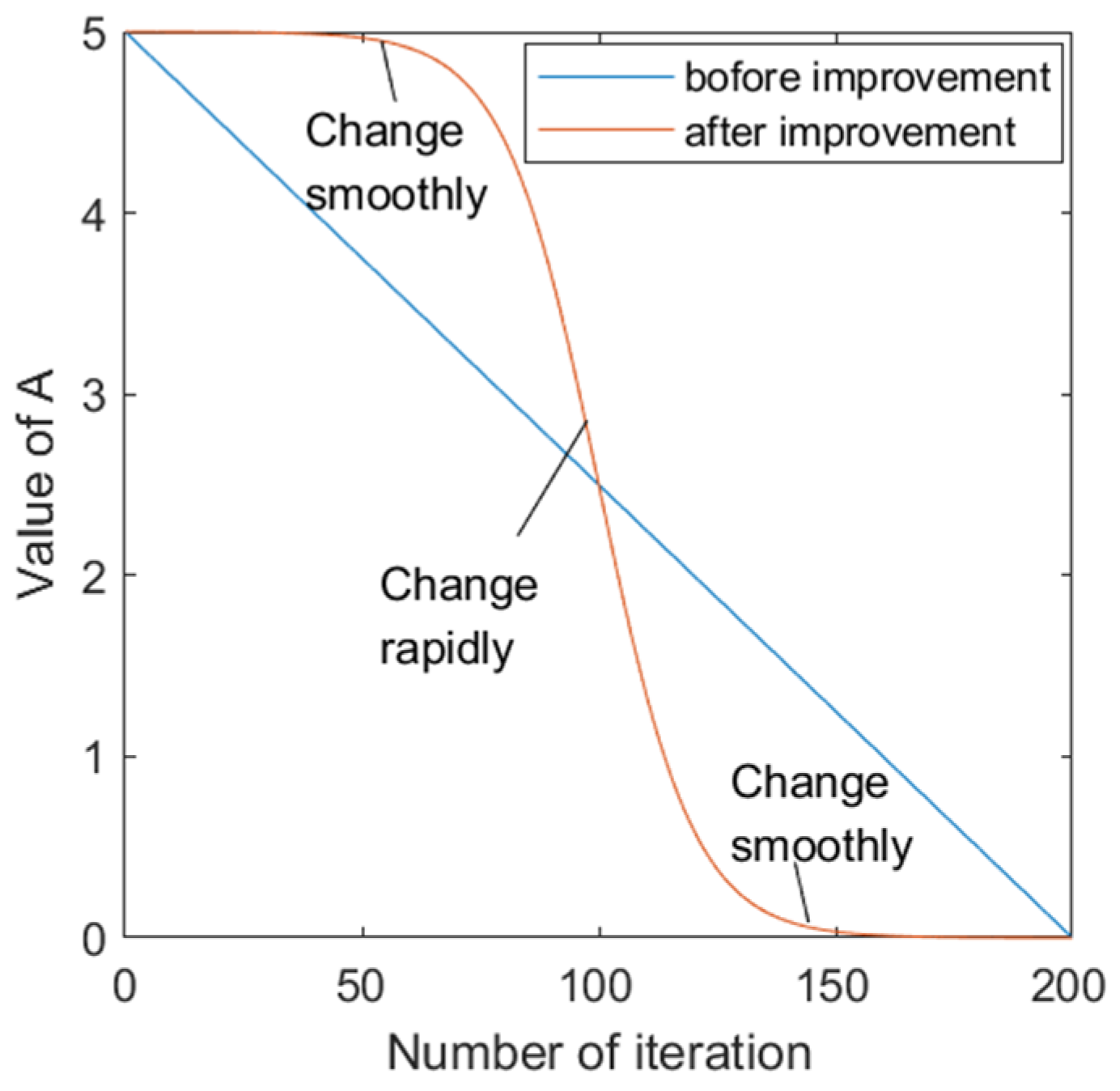
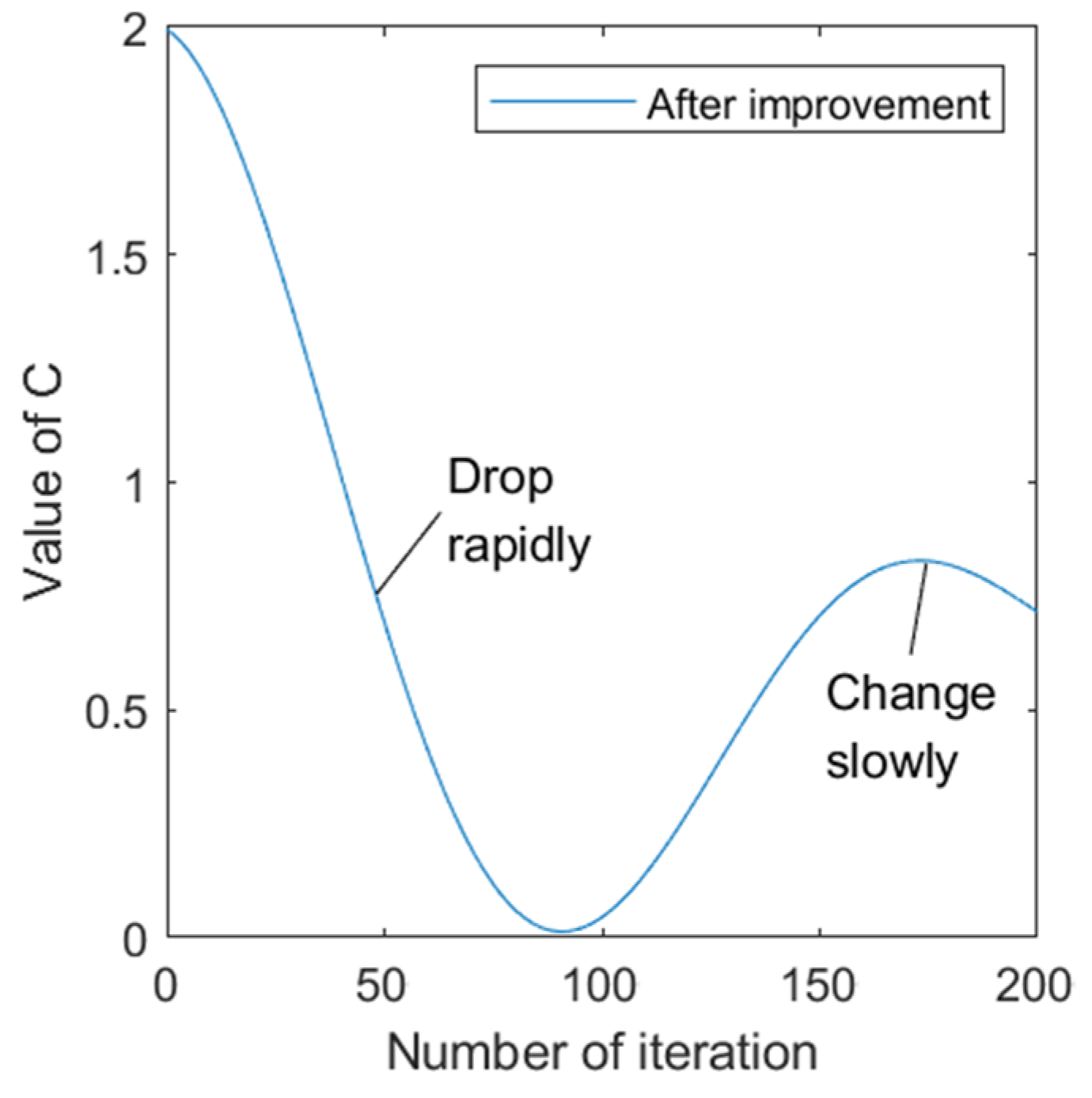
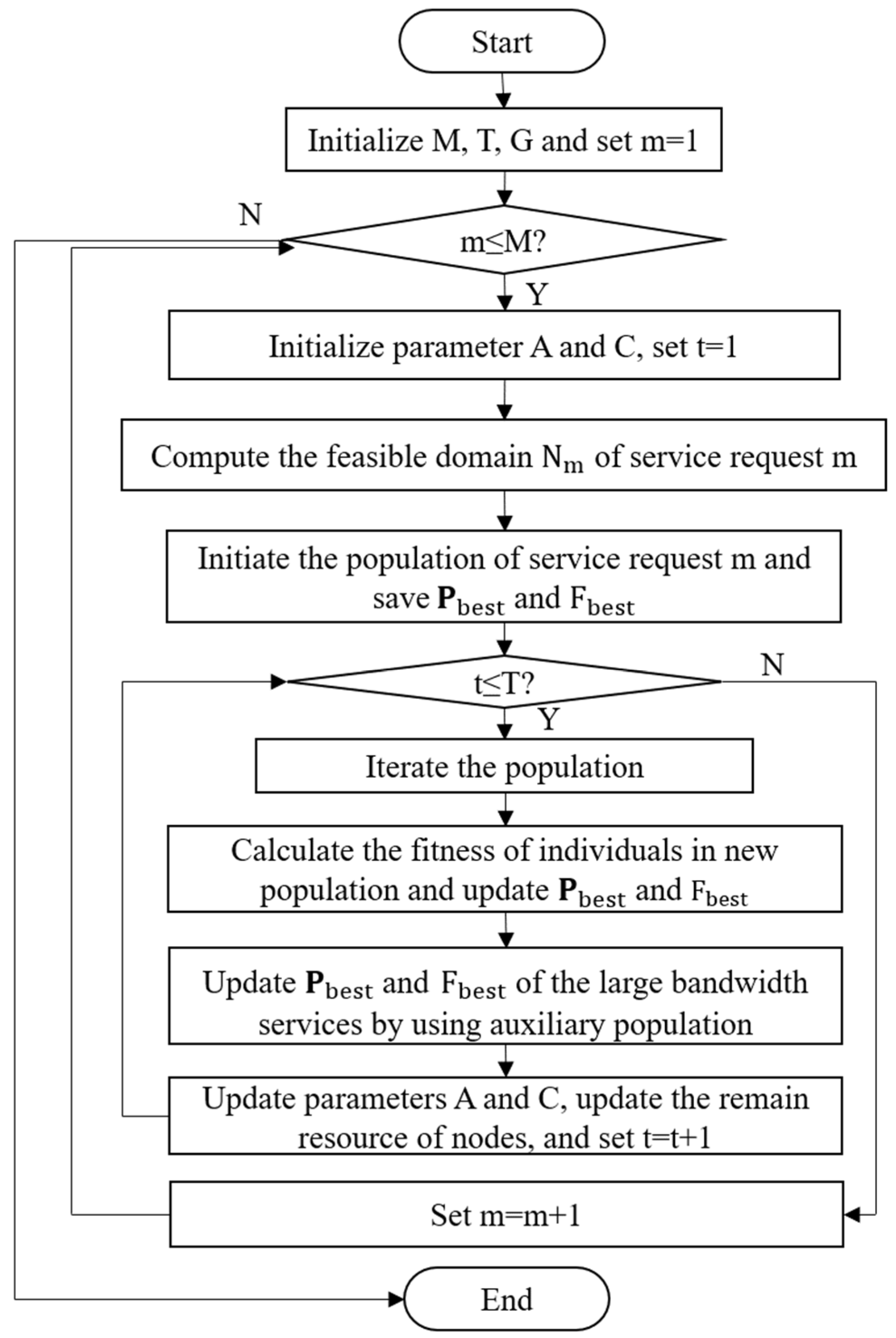
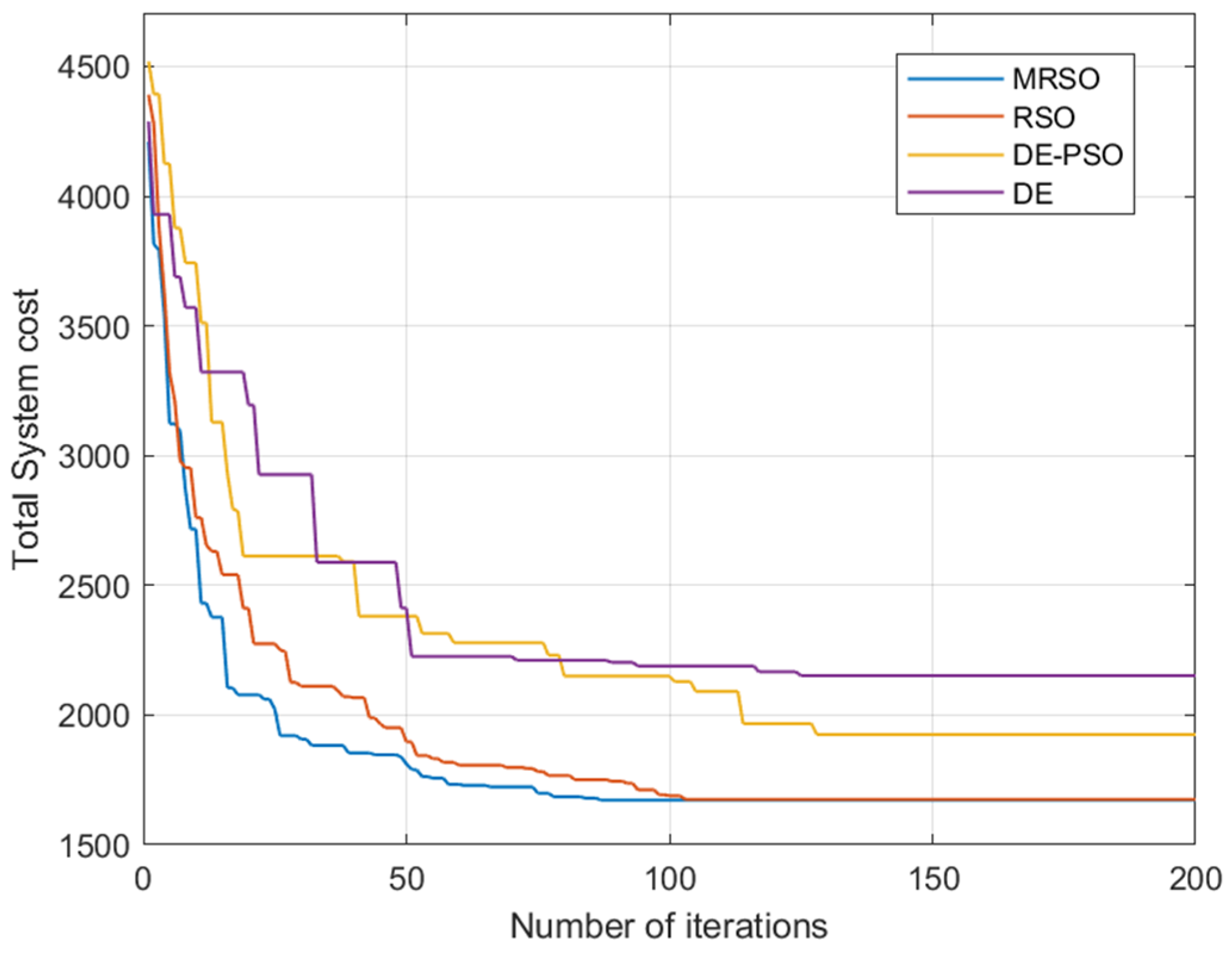
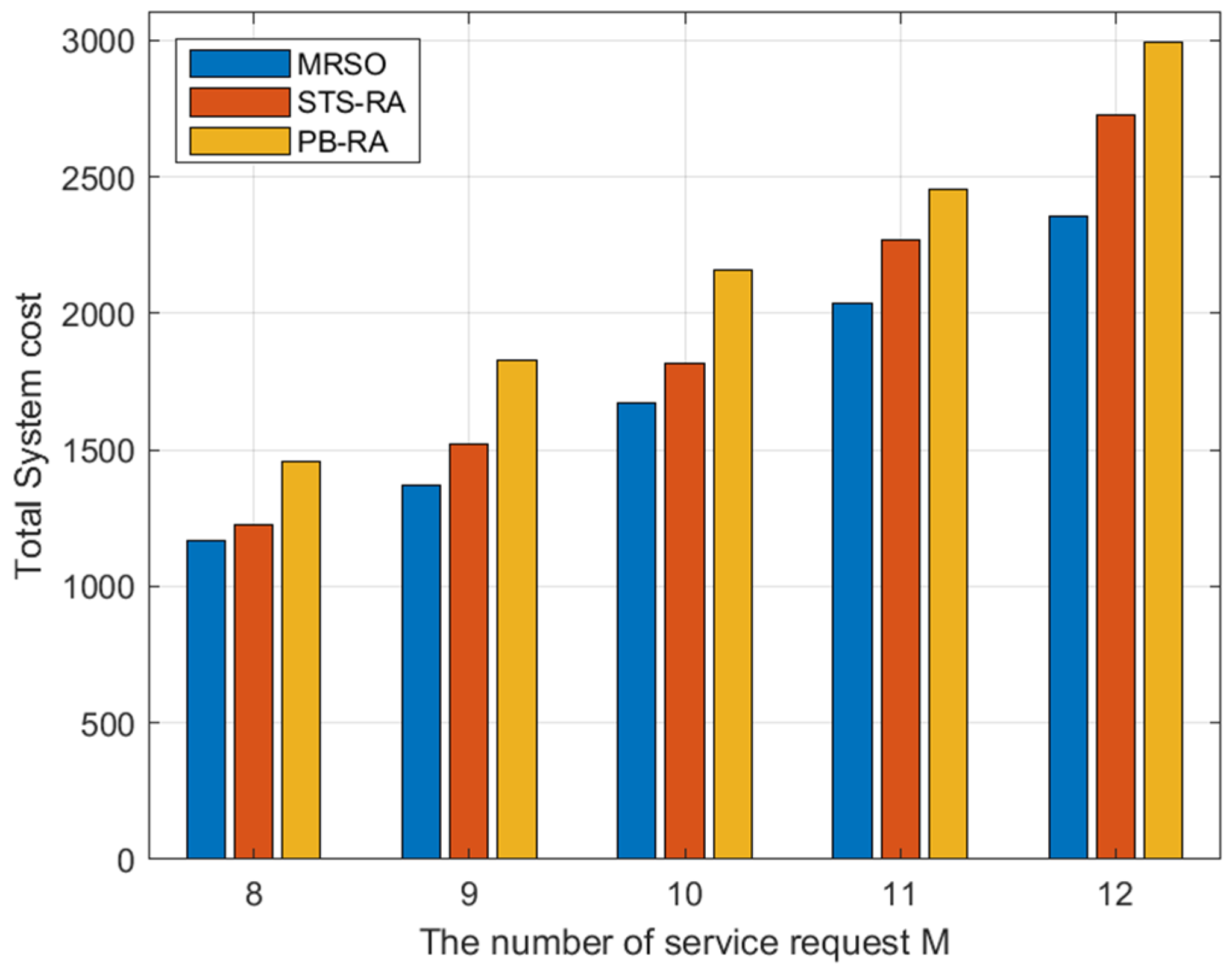
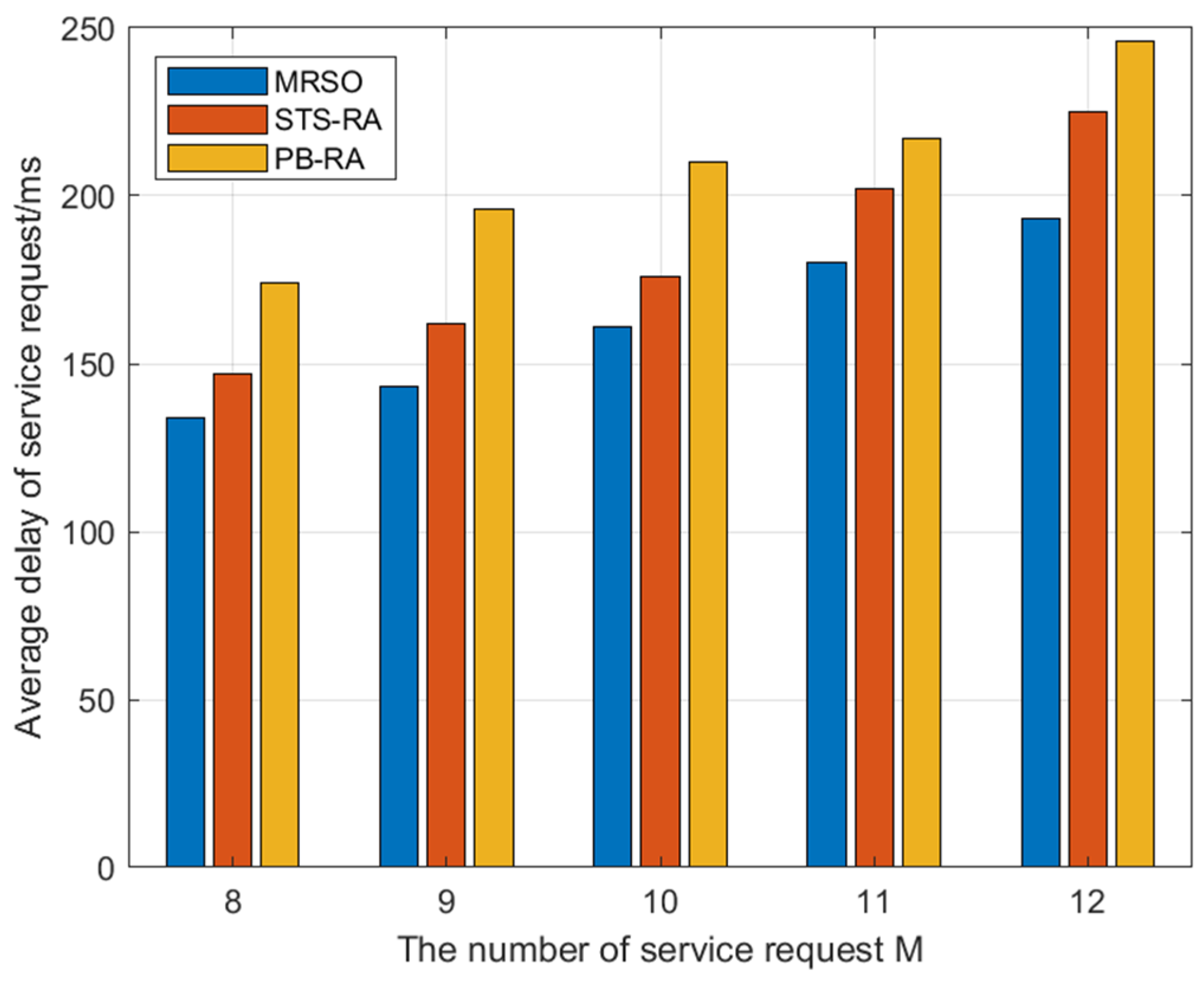
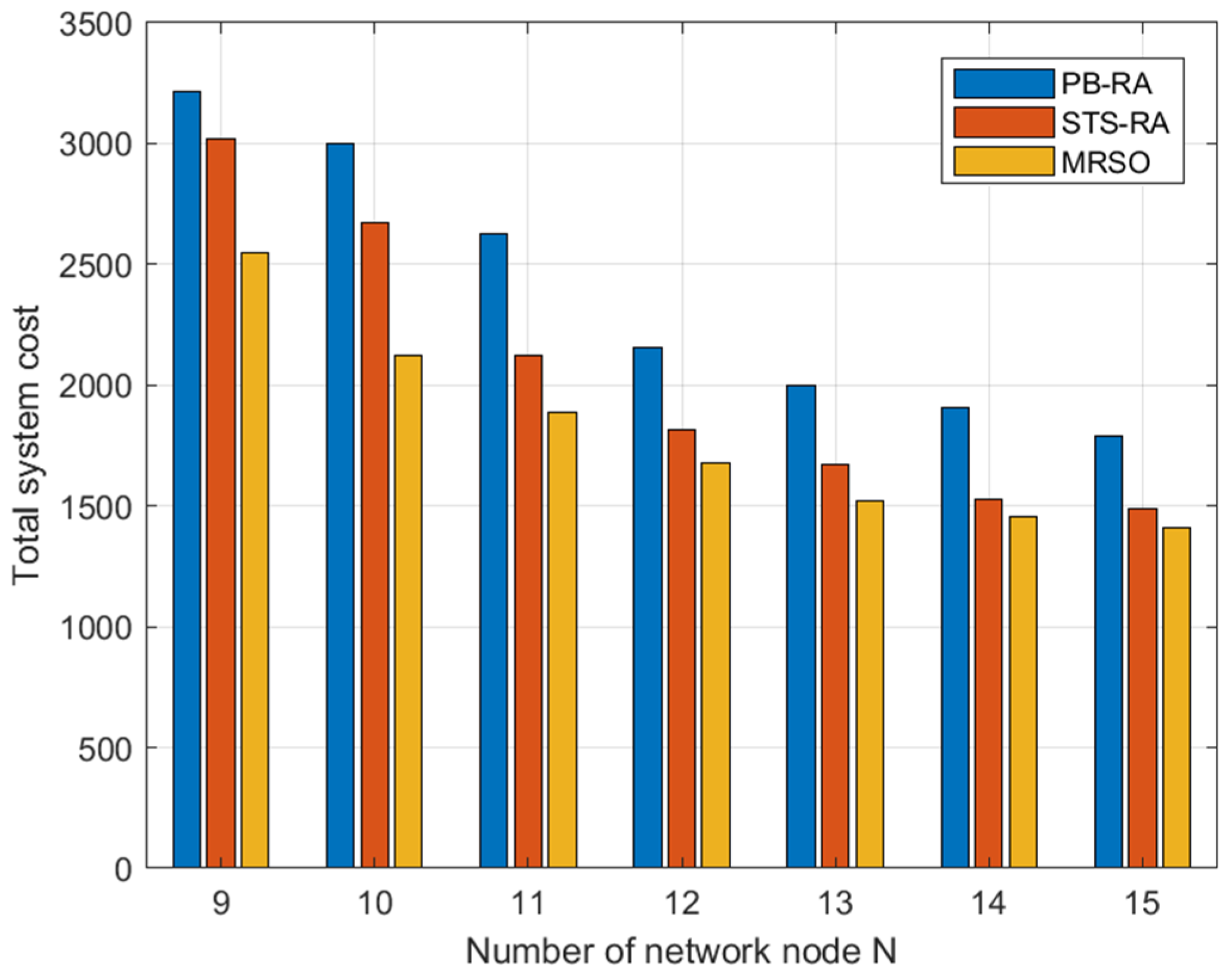
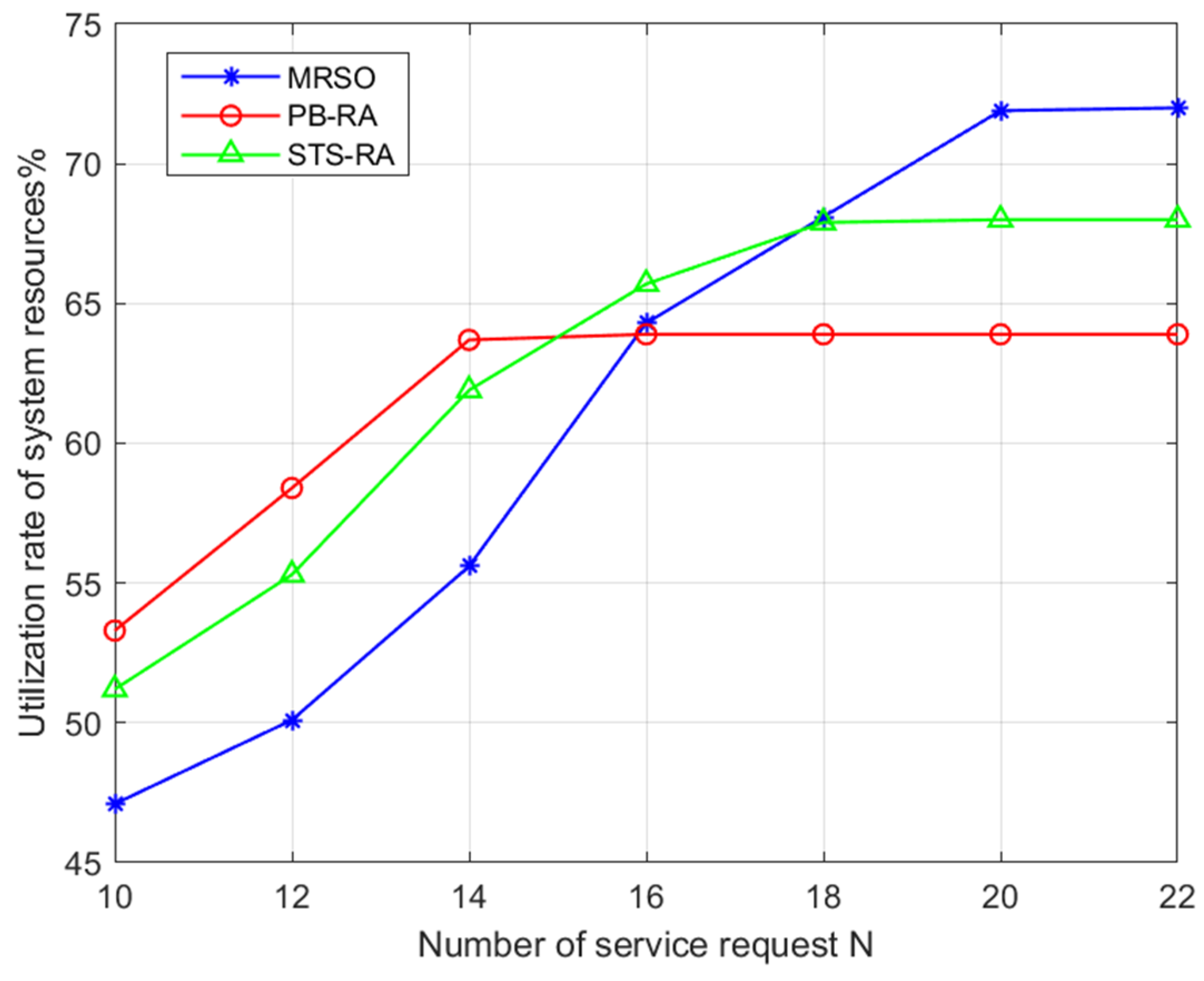
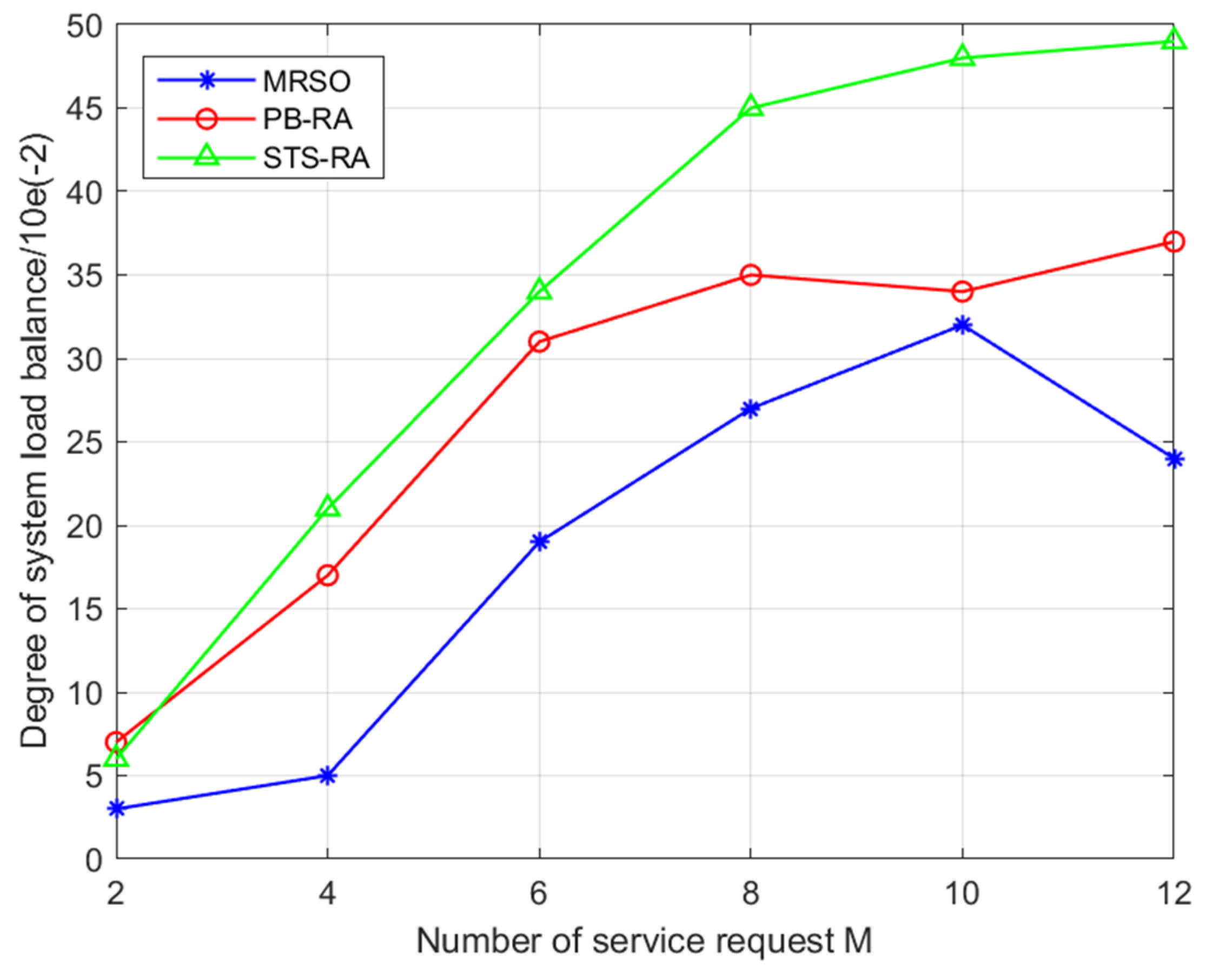
| Parameter Description | Symbol | Value/Unit |
|---|---|---|
| Bandwidth required by service request m | 1~800 Mbps | |
| Computing resource required by service request m | 0.2~4 Gcycles | |
| Caching resource required by service request m | 1~10 GB | |
| The amount of data transferred by the service request m | 0.1~4000 Mbit | |
| Maximum tolerated latency of service request m | 10~300 ms | |
| Weight coefficient | 320 | |
| Noise power | 2 × | |
| Transmission power of node n | 0.1~1 W | |
| Proportional coefficient | μ | 0.1 |
Disclaimer/Publisher’s Note: The statements, opinions and data contained in all publications are solely those of the individual author(s) and contributor(s) and not of MDPI and/or the editor(s). MDPI and/or the editor(s) disclaim responsibility for any injury to people or property resulting from any ideas, methods, instructions or products referred to in the content. |
© 2024 by the authors. Licensee MDPI, Basel, Switzerland. This article is an open access article distributed under the terms and conditions of the Creative Commons Attribution (CC BY) license (https://creativecommons.org/licenses/by/4.0/).
Share and Cite
Tang, J.; Shao, S.; Guo, S.; Wang, Y.; Wu, S. A Collaborative Allocation Algorithm of Communicating, Caching and Computing Resources in Local Power Wireless Communication Network. Information 2024, 15, 309. https://doi.org/10.3390/info15060309
Tang J, Shao S, Guo S, Wang Y, Wu S. A Collaborative Allocation Algorithm of Communicating, Caching and Computing Resources in Local Power Wireless Communication Network. Information. 2024; 15(6):309. https://doi.org/10.3390/info15060309
Chicago/Turabian StyleTang, Jiajia, Sujie Shao, Shaoyong Guo, Ye Wang, and Shuang Wu. 2024. "A Collaborative Allocation Algorithm of Communicating, Caching and Computing Resources in Local Power Wireless Communication Network" Information 15, no. 6: 309. https://doi.org/10.3390/info15060309
APA StyleTang, J., Shao, S., Guo, S., Wang, Y., & Wu, S. (2024). A Collaborative Allocation Algorithm of Communicating, Caching and Computing Resources in Local Power Wireless Communication Network. Information, 15(6), 309. https://doi.org/10.3390/info15060309











